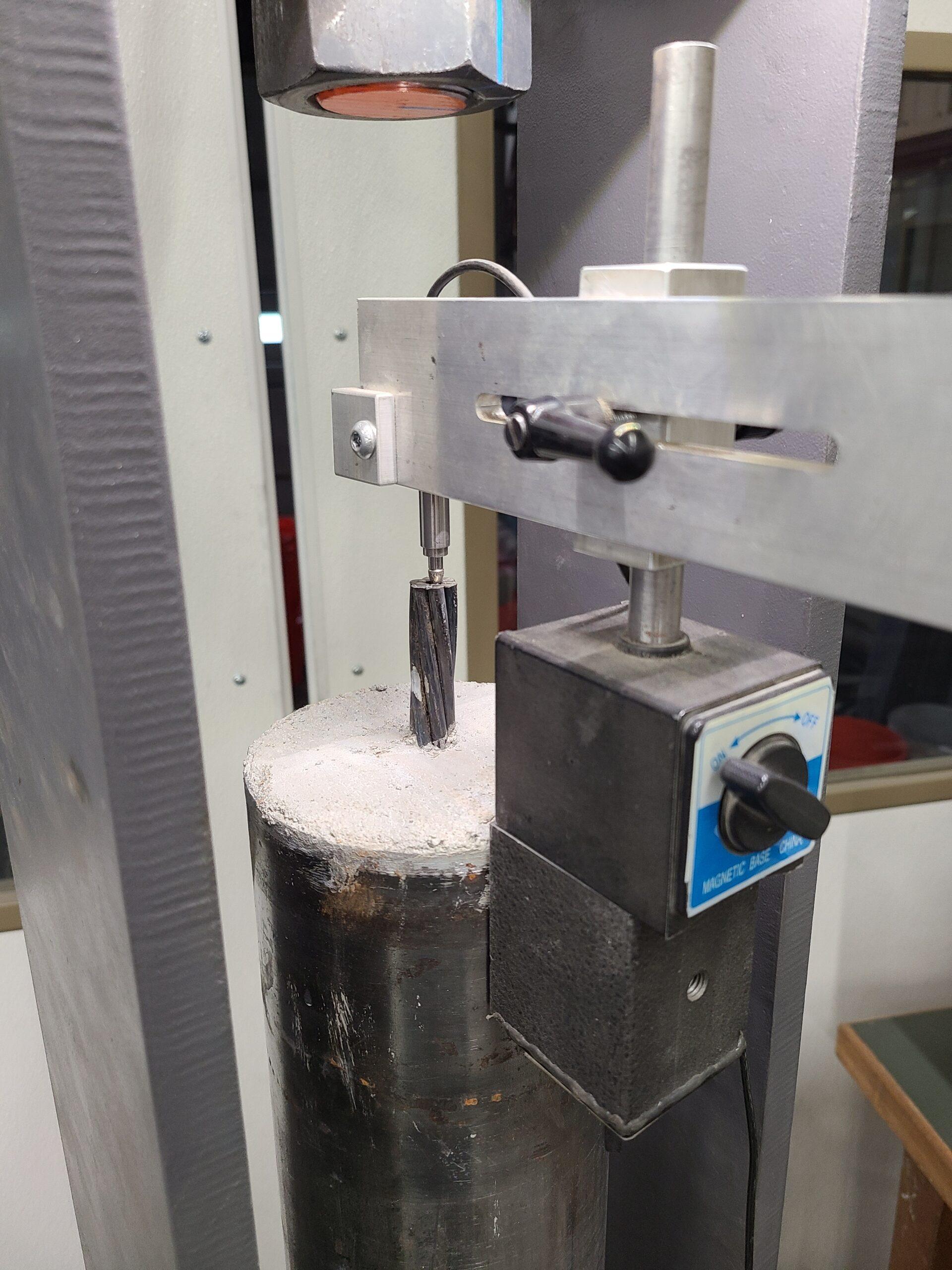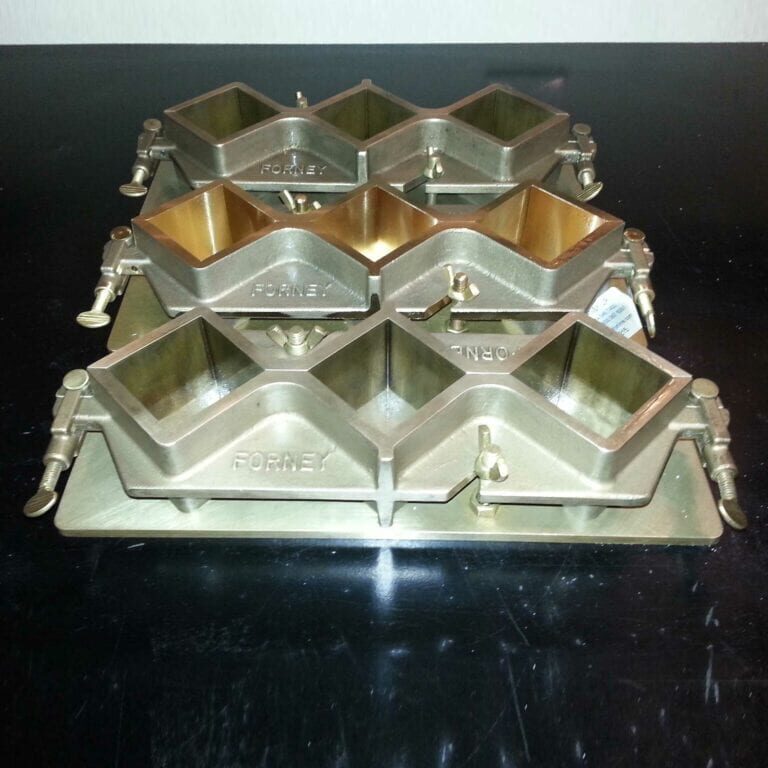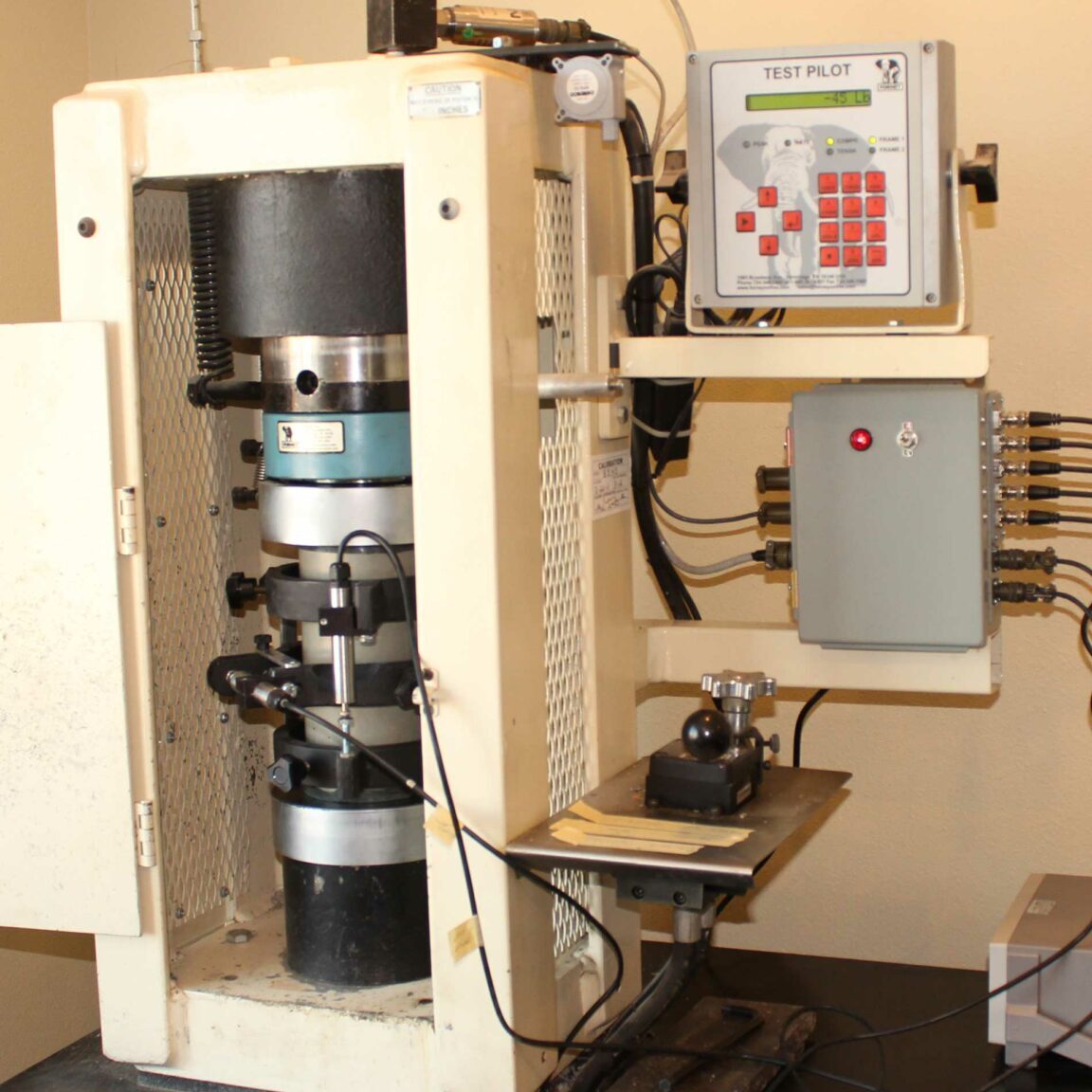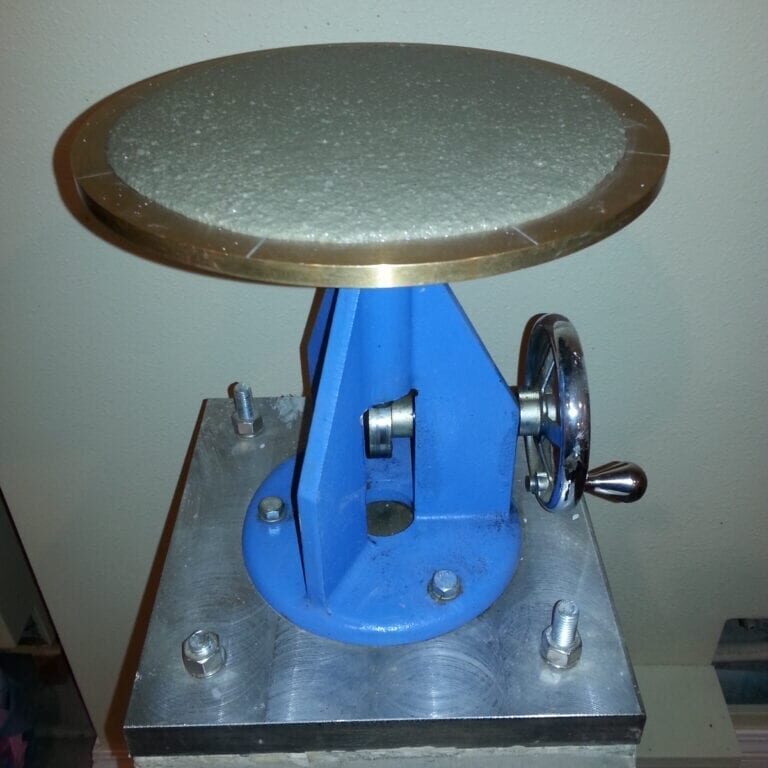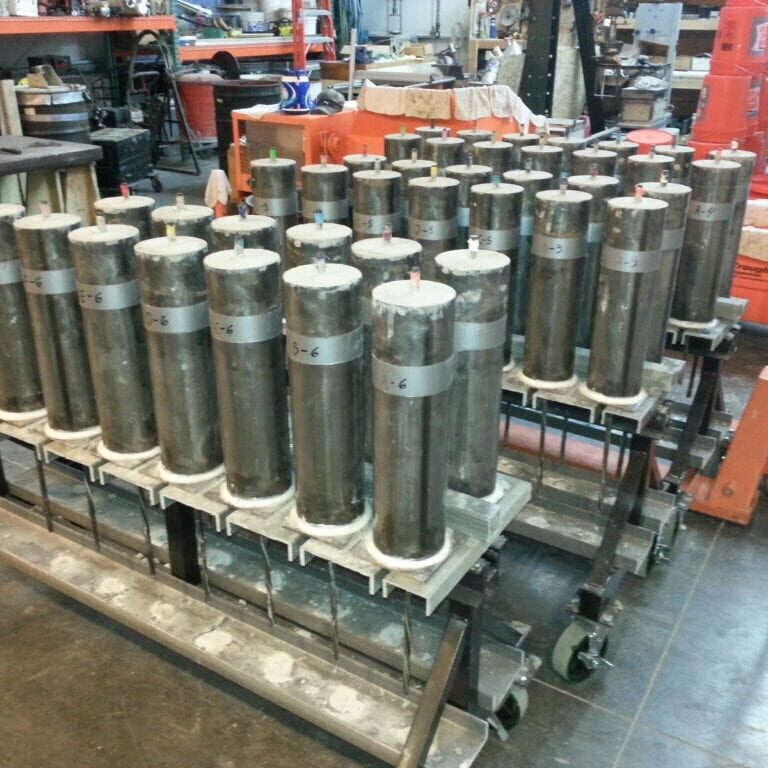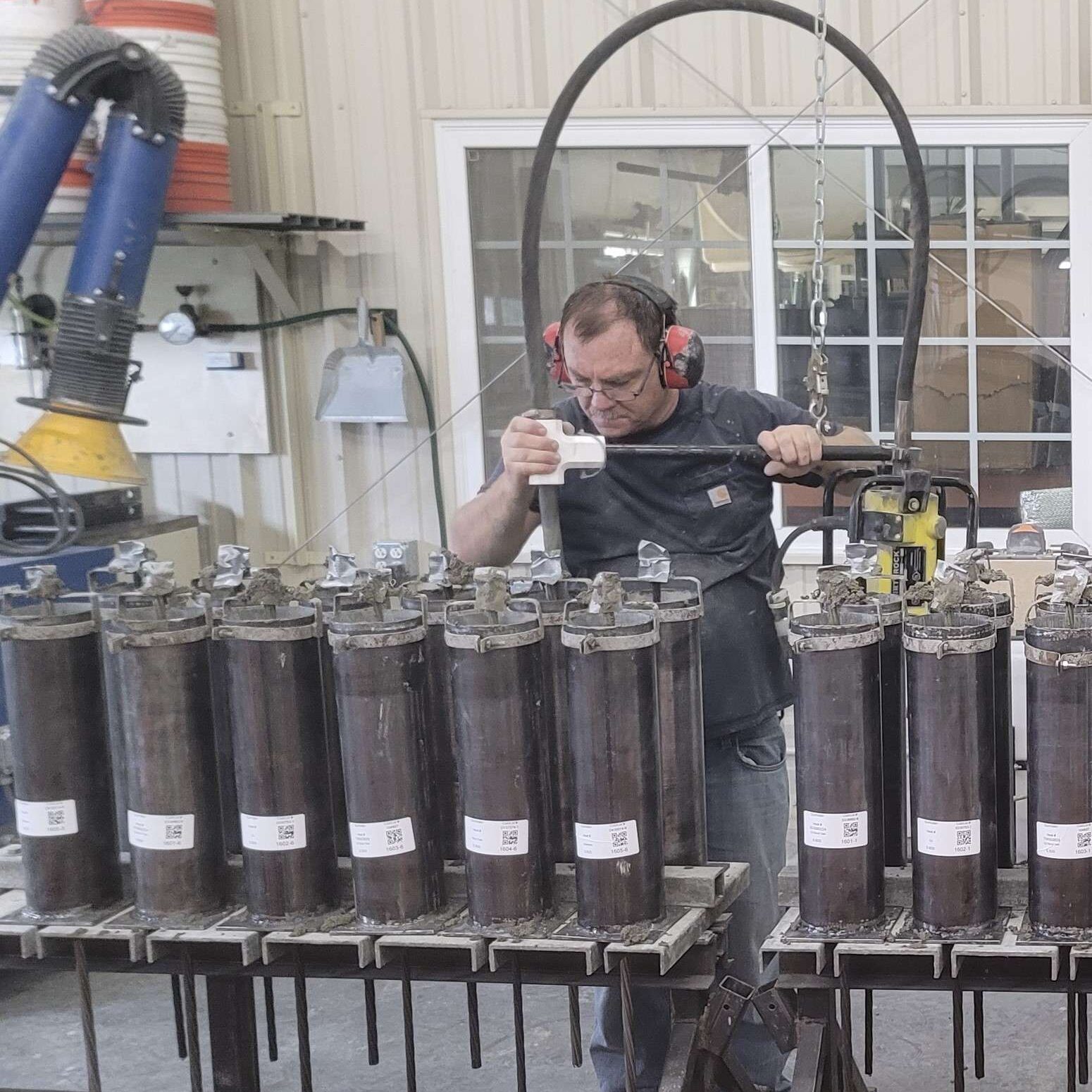Standard Test Method for Evaluating Bond of Seven-Wire Steel Prestressing Strand
ASTM A1081/A1081M-21
This test method describes procedures for determining the bond of seven-wire steel prestressing strand. The bond determined by this test method is stated as the tensile force required to pull the strand through the cured mortar in a cylindrical steel casing. The result of the test is the tensile force measured on the loaded-end of the strand corresponding to a movement of 0.1 in. [2.5 mm] at the free-end of the strand.
RJ Peterman & Associates has conducted ASTM A1081 Strand Bond Pullout Tests (formerly known as the NASP Strand Bond Test) for U.S. strand producers as well as for international strand suppliers, domestic and international precast manufacturers, strand importers, and research universities. We have assisted many strand producers (both domestically and worldwide) by providing prompt and confidential test results as they have made changes to their manufacturing processes.
In addition, we have utilized the ASTM A1081 test method to evaluate the bond of many different strand sizes including 0.313", 0.375", 0.438", 0.500", 0.520", 0.563", 0.600", 0.620” and 0.700" diameter. We can test bright (uncoated), galvanized, stainless steel, epoxy-coated and indented strands.
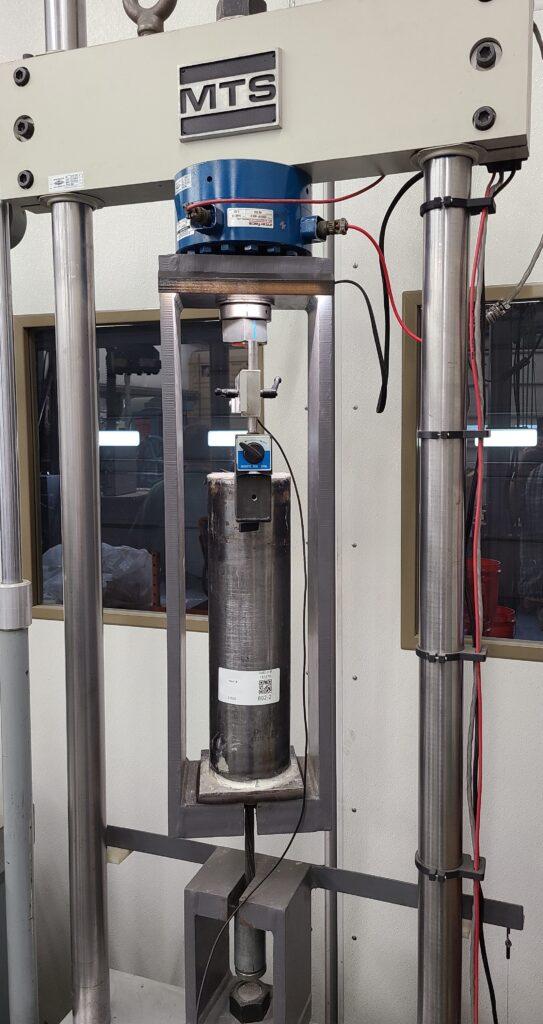
Our Unique Qualifications to Perform This Test
Dr. Peterman has been conducting ASTM A1081-Type Pullout Tests (formerly called the NASP Test) since 2002 when the test was in the early stages of development. This test was originally developed by the North American Strand Producers (NASP) and was subsequently adopted as ASTM A1081 in 2012.
Background
From 2011 to 2014, Dr. Peterman was a co-principal investigator on the project titled “Determination of Acceptance Criteria for Prestressing Strand in Pretensioned Applications”. This study was funded by the Precast/Prestressed Concrete Institute (PCI) to:
- Evaluate factors that can influence test results and
- Recommend a minimum ASTM A1081 Value that will result in pretensioned concrete products having transfer and development lengths that meet current design assumptions.
This work led directly to the following PCI manuscripts (click on each link below to access the paper):
2. “Establishment of a Minimum Acceptance Criteria for Strand Bond as Measured by ASTM A1081”
RESEARCH FINDINGS
Dr. Peterman and his colleagues discovered that the cement source and sand gradation can have a significant effect on the resulting test value. Accordingly, reference 1 (above) reports “an average maximum difference of over 21% was obtained when comparing the pullout test results of identical strand sources tested in mortar mixtures that meet ASTM A1081 standards but utilized different ASTM C150 type III cement sources.”
HOW WE ENSURE CONSISTENCY OF TEST RESULTS
At RJ Peterman & Associates, we maintain “control strand” samples that are used to ensure that new cement batches are not adversely affecting test results. Therefore, whenever a new batch of Type III cement is purchased for possible use in ASTM 1081 tests, a trial pullout test is conducted with these “control strand” samples and the results evaluated to ensure that the cement is yielding consistent pullout values. Our "control samples” were cut from a single master strand coil and directly benchmarked to the PCI study.
In addition, RJ Peterman & Associates, Inc. purchases sand (20 tons at a time) from the same source that was used to develop the test. Our acute attentiveness to cement and sand sources ensures maximum consistency of the test results and the absolute highest quality for our customers.
